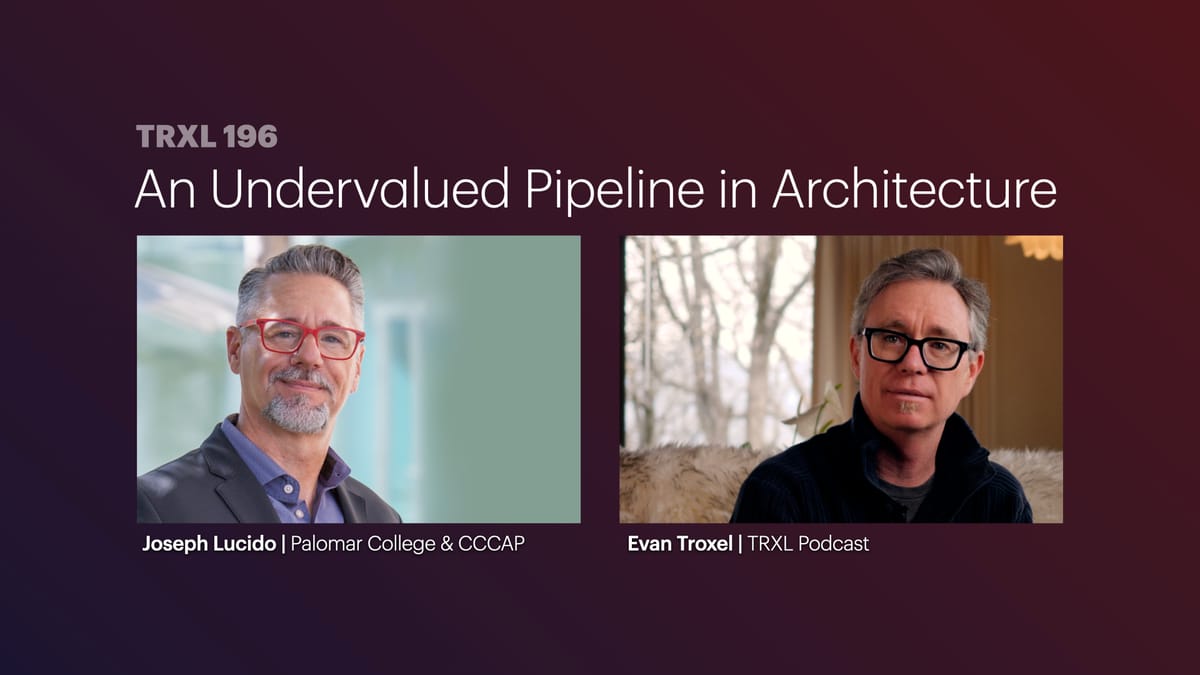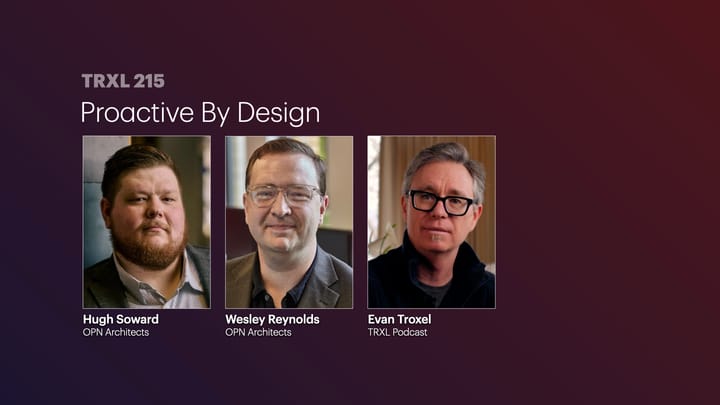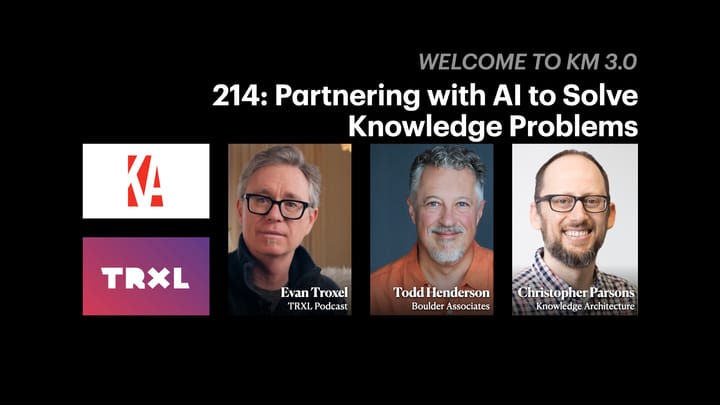Leadership Edge: TRXL 196
In this edition: Reimagining community colleges as launchpads for architecture careers, redefining success beyond design, embedding students in “teaching firms,” and integrating analog methods with cutting-edge tech to align education with a rapidly evolving profession.

Summary
In episode 196 of TRXL, I spoke with Joseph Lucido, Chair of Architecture at Palomar College and President of CCCAP, about how community colleges are quietly becoming the most innovative and equitable force in architectural education today. We covered evolving student expectations, studio culture shifts, the power of “teaching firms,” and how community colleges aren’t just stepping stones but are becoming essential launchpads for a more inclusive and practice-ready profession.
Having taught at both university and community college architecture programs, I found community colleges to be more proactive and nimble in evolving their curriculum. They effectively meet both the needs of the current and future workforce and the educational requirements of students planning to transfer to universities. It's important to note that “students” at community colleges range from recent high school graduates to adult learners in their mid-30s and beyond. Joseph mentioned that about 40% of students in their programs are adult learners who are 24-25 years and older. This diversity creates additional perspectives to consider, all while maintaining greater agility in curriculum development. Hats off to them!
“If we want to change culture in architecture, it has to start in academia. Sleeping under your desk will not be rewarded in a firm.”
– Joseph Lucido
Key Takeaways
Here are my top takeaways from the podcast episode. Then we'll get into the deeper analysis.




